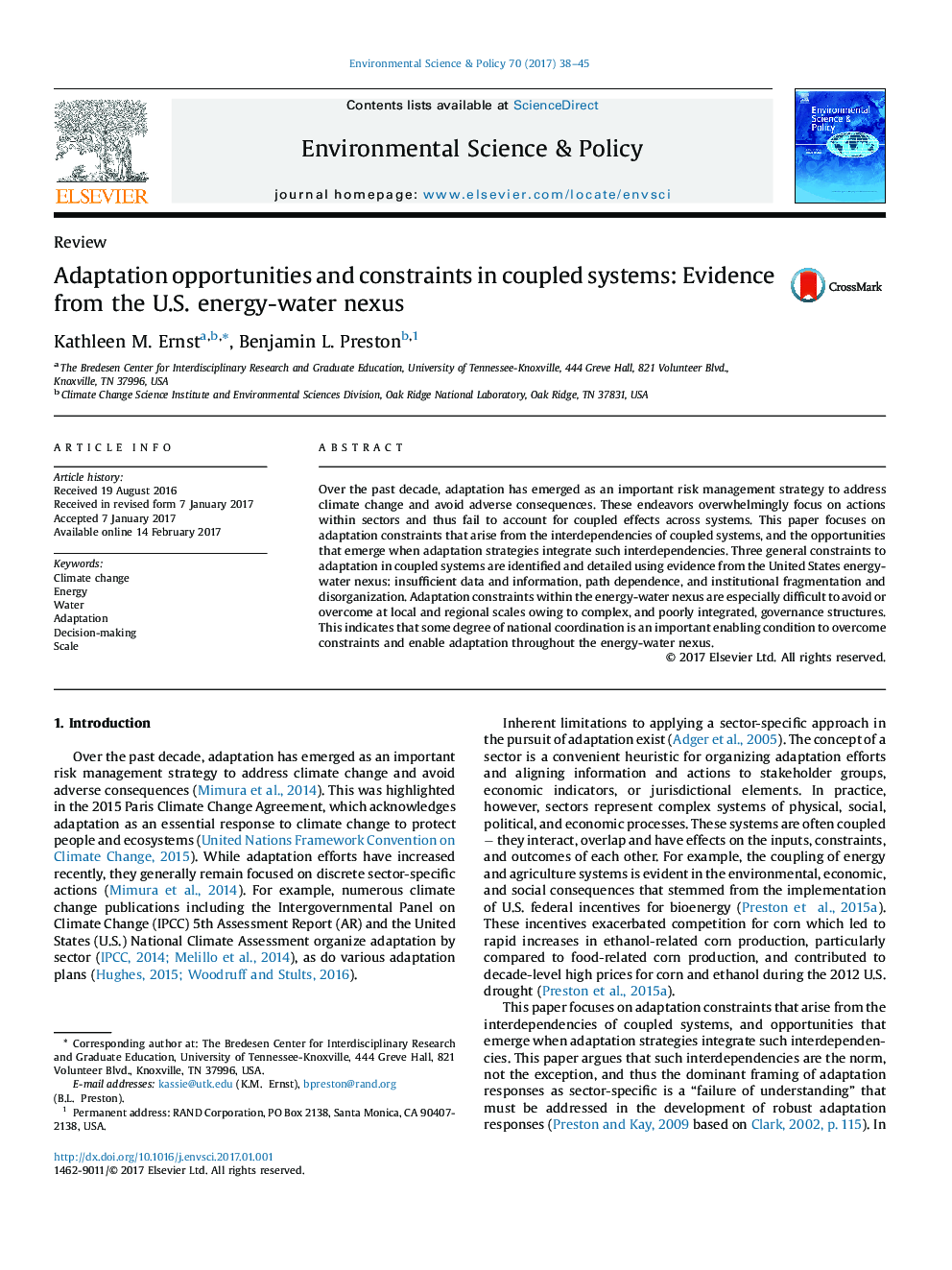| Article ID | Journal | Published Year | Pages | File Type |
|---|---|---|---|---|
| 5115771 | Environmental Science & Policy | 2017 | 8 Pages |
Abstract
Over the past decade, adaptation has emerged as an important risk management strategy to address climate change and avoid adverse consequences. These endeavors overwhelmingly focus on actions within sectors and thus fail to account for coupled effects across systems. This paper focuses on adaptation constraints that arise from the interdependencies of coupled systems, and the opportunities that emerge when adaptation strategies integrate such interdependencies. Three general constraints to adaptation in coupled systems are identified and detailed using evidence from the United States energy-water nexus: insufficient data and information, path dependence, and institutional fragmentation and disorganization. Adaptation constraints within the energy-water nexus are especially difficult to avoid or overcome at local and regional scales owing to complex, and poorly integrated, governance structures. This indicates that some degree of national coordination is an important enabling condition to overcome constraints and enable adaptation throughout the energy-water nexus.
Related Topics
Physical Sciences and Engineering
Energy
Renewable Energy, Sustainability and the Environment
Authors
Kathleen M. Ernst, Benjamin L. Preston,
